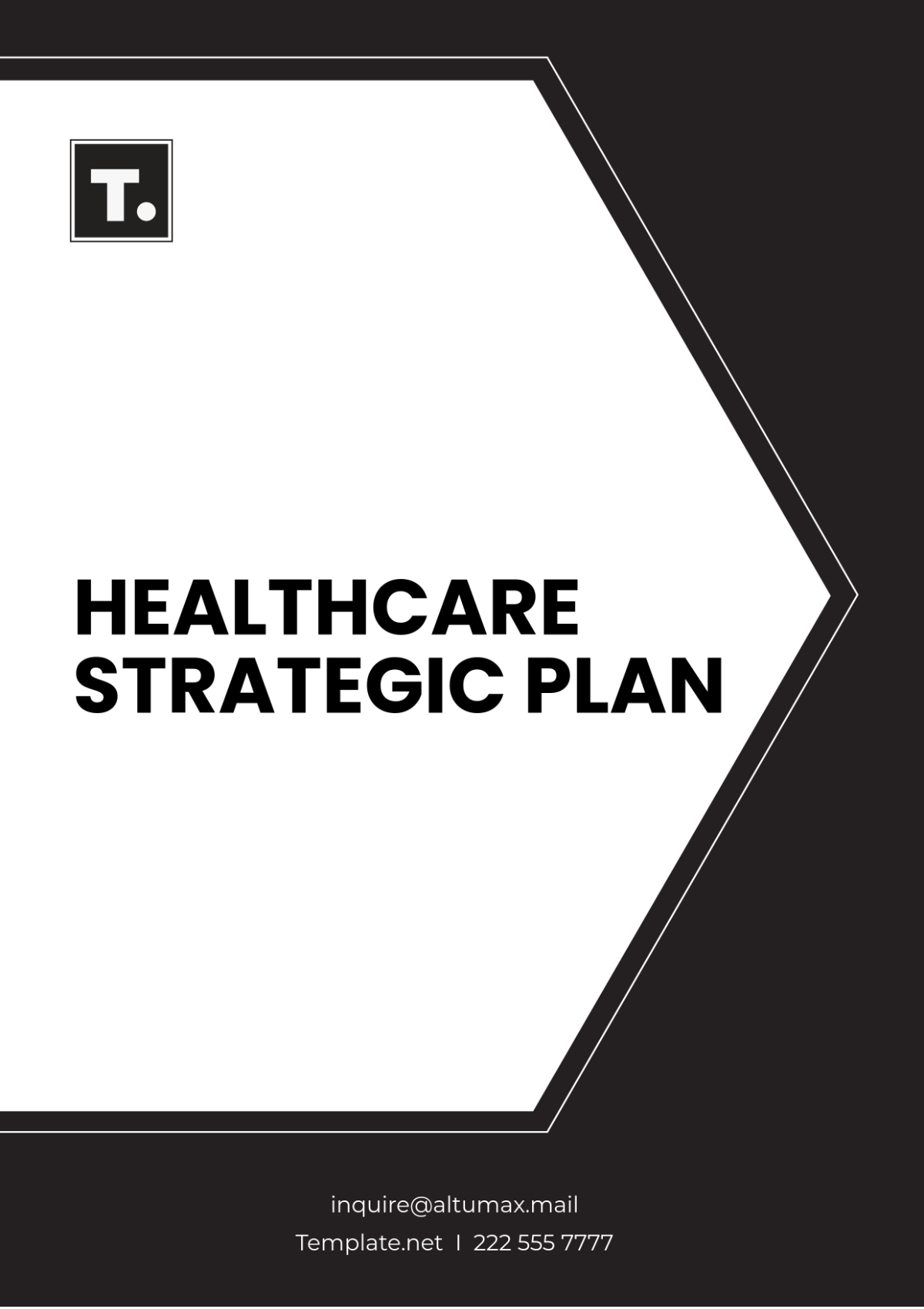Free Healthcare Strategic Plan

Prepared by [YOUR NAME]
I. Executive Summary
The Healthcare Strategic Plan for [YOUR COMPANY NAME] outlines our vision, mission, and strategic goals for the next five years. This plan addresses both immediate challenges and long-term goals, focusing on delivering exceptional patient care, advancing our medical capabilities, and ensuring financial sustainability.
II. Situation Analysis
This section evaluates the current healthcare environment, identifying both opportunities and challenges that [YOUR COMPANY NAME] faces.
A. Market Analysis
Overview of the healthcare industry's current trends:
Healthcare spending in the U.S. is expected to reach $6.2 trillion by 2055, driven by an aging population and technological advancements.
A growing trend towards value-based care emphasizes patient outcomes and cost-effectiveness.
Analysis of competitors and their strategies:
Competitor A has implemented a comprehensive telemedicine program, increasing accessibility for patients in rural areas.
Competitor B has invested heavily in robotic surgery technology, enhancing surgical precision and patient outcomes.
Changes in healthcare regulations and their implications:
The recent CMS rule on price transparency requires hospitals to disclose negotiated rates, impacting our pricing strategy.
Expansion of telehealth reimbursement under Medicare opens new revenue streams for virtual care services.
B. SWOT Analysis
Strengths | Weaknesses | Opportunities | Threats |
|---|---|---|---|
Highly skilled staff | Limited outreach in rural areas | Expanding telehealth services | Emerging competitive health models |
III. Vision and Mission
[YOUR COMPANY NAME]'s vision and mission guide our strategic decisions and actions.
A. Vision Statement
To be a leader in healthcare innovation and patient care excellence.
B. Mission Statement
To improve the health and well-being of our communities through dedicated service, education, and cutting-edge treatments.
IV. Goals and Objectives
The following goals and objectives are designed to propel [YOUR COMPANY NAME] towards its vision in a measurable and timely manner.
A. Short-Term Goals
Reduce patient waiting times by 15% within the next year.
Increase patient satisfaction scores to 90% within the next 18 months.
B. Long-Term Goals
Establish two additional outpatient clinics in underserved regions by year three.
Implement an advanced digital health records system by year five.
V. Strategies and Action Plans
To achieve the set goals, specific strategies and actions have been developed, focusing on innovation, patient care, and operational efficiency.
A. Strategy for Patient Care Improvement
Invest in staff training programs on patient care standards and empathy.
Introduce patient care coordinators to enhance patient experience and care continuity.
B. Strategy for Technological Advancement
Partner with technology firms to develop a custom digital health platform.
Regularly update medical equipment based on the latest industry standards.
VI. Performance Metrics
Effective measurement and monitoring systems will be established to regularly assess the effectiveness of the implemented strategies.
A. Patient Care Metrics
Patient follow-up outcomes
Patient feedback and satisfaction surveys
B. Operational Metrics
Financial performance reports
Employee turnover and retention rates
VII. Budget Breakdown
A comprehensive budget of $10 million is allocated to support the strategic initiatives. Detailed financial planning ensures that resources are used effectively to achieve our goals.
Staff Training Programs: $2,000,000
(Focused on enhancing patient care standards and empathy training)Patient Care Coordinators' Salaries: $1,500,000
(Hiring and sustaining a team of care coordinators for improved patient experience)Technology Development and Updates: $3,000,000
(Investment in custom digital health platforms and medical equipment upgrades)Community Engagement Programs: $1,000,000
(Initiatives aimed at increasing outreach, especially in underserved regions)Risk Management Initiatives: $2,500,000
(Resources dedicated to ensuring compliance, data security, and patient safety)
Total Budget: $10,000,000
VIII. Review and Adaptation
The strategy will be reviewed annually to make necessary adjustments in response to internal assessments and external changes within the healthcare industry.
- 100% Customizable, free editor
- Access 1 Million+ Templates, photo’s & graphics
- Download or share as a template
- Click and replace photos, graphics, text, backgrounds
- Resize, crop, AI write & more
- Access advanced editor
Enhance healthcare delivery with the Healthcare Strategic Plan Template from Template.net. This customizable, downloadable, and printable template provides a comprehensive framework for strategic planning. With editable features in our AI Editor Tool, tailor the plan to your healthcare organization's specific needs. Streamline your strategy and improve patient care with this invaluable resource.





























